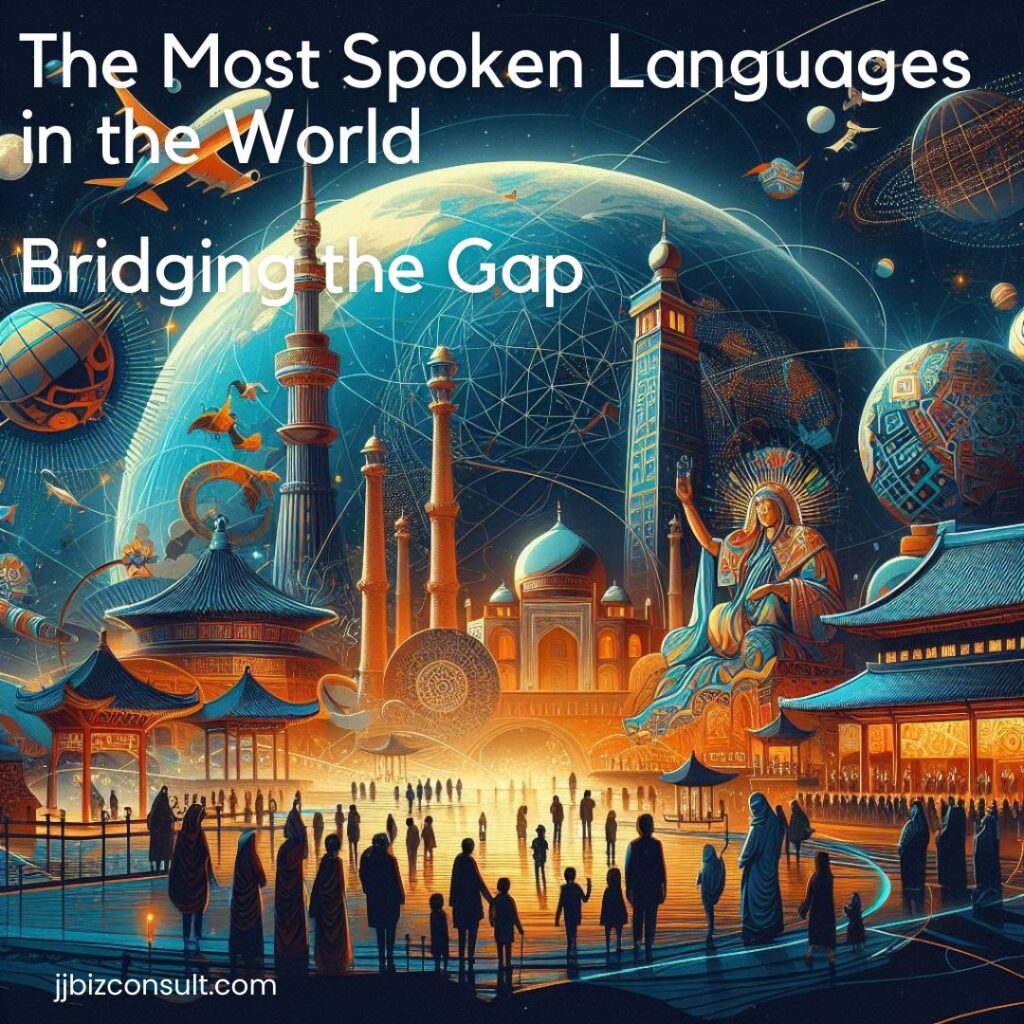The Most Spoken Languages in the World: Bridging the Digital Divide

The Most Spoken Languages in the World: Bridging the Digital Divide. In our increasingly interconnected world, language acts as both a bridge and a barrier. While the internet has revolutionized global communication, language barriers persist, limiting access to information and participation in the digital conversation. Imagine a vast web of knowledge, but its threads are woven in a language you don’t understand. This is the reality for millions of people worldwide.
The Most Spoken Languages in the World: The Dominance of English: A Double-Edged Sword
English, the internet’s lingua franca, plays a pivotal role in connecting people across borders. According to W3Techs, over half of all websites use English as their primary content language. It’s the default choice for businesses, bloggers, and content creators aiming to reach a global audience. But here’s the catch: English’s global footprint isn’t as expansive as one might assume.
The Numbers Speak: English in Context
Let’s delve into the numbers. Ethnologue, a renowned research center for language intelligence, estimates that approximately 1.46 billion people speak English worldwide. However, this figure includes both native speakers and non-native speakers. Here’s the breakdown:
- Native Speakers: Roughly 380 million people speak English as their first language.
- Non-Native Speakers: The remaining 1.08 billion use English as a second language.
While English’s total speaker count is impressive, it still represents less than 20 percent of the global population. In other words, four out of five people in the world don’t have English as their primary means of communication.

Beyond English: A Multilingual Landscape
Moving beyond English, let’s explore the rich tapestry of languages spoken around the globe:
- Mandarin Chinese: With approximately 1.14 billion speakers, Mandarin Chinese takes the crown as the most spoken language globally. It boasts 940 million native speakers, making it a powerhouse of communication.
- Hindi: India’s official language, Hindi, has 345 million native speakers and an additional 266 million who use it as a second language. Its influence extends far beyond India’s borders.
- Spanish: The romance of Spanish resonates with 485 million native speakers and 74 million second-language users. It’s the bridge between continents.
- French: With 81 million native speakers and 229 million second-language speakers, French thrives both online and offline.
- Arabic: While Modern Standard Arabic lacks native speakers (due to its formal nature), it boasts 274 million second-language users. Its impact on culture and religion is immense.
- Bengali: Often overlooked, Bengali shines with 234 million native speakers and 39 million second-language learners.

The Most Spoken Languages in the World: The Digital Divide: Language and the Internet
Despite this linguistic richness, the internet doesn’t always reflect global diversity. Some languages remain underrepresented online:
Chinese (Mandarin): Despite having the highest number of speakers globally, Mandarin Chinese doesn’t have the same online presence. The complexities of its writing system and regional variations contribute to this gap.
Hindi: As one of the most widely spoken languages, Hindi faces challenges online. While it thrives in Bollywood movies and literature, its digital footprint is relatively small.
Arabic: Arabic, with its rich literary heritage and cultural significance, struggles to find a strong foothold on the internet. The dominance of English often overshadows it.
Bengali: Bengali, spoken by millions in Bangladesh and India, deserves more recognition online. Its vibrant literature and historical contributions remain hidden from many internet users.
Russian: Despite being the largest native language in Europe, Russian doesn’t enjoy the same prominence online. Cyrillic script and geopolitical factors play a role here.
Japanese: A language of precision, art, and technology, Japanese faces challenges due to its unique writing system and limited global adoption.
Swahili: Widely spoken in East Africa, Swahili is a bridge language across multiple countries. However, its online representation remains limited.
Vietnamese: With a rich cultural heritage, Vietnamese struggles to break through language barriers online.
Urdu: Urdu, spoken in South Asia, has a passionate literary tradition. Yet, it remains relatively invisible on the web.
Tamil: Tamil, with a rich history and vibrant literature, deserves more digital recognition.

Conclusion: The Most Spoken Languages in the World: Bridging the Gap
As we navigate the digital landscape, let’s recognize the power of language. While English facilitates global communication, we must also celebrate and elevate other languages. Let’s build bridges, not barriers, ensuring that everyone can participate in the world’s conversation, regardless of the language they speak.
This blog post highlights the importance of recognizing the most spoken languages in the world and the challenges they face in the digital age. By promoting linguistic diversity and bridging the digital divide, we can ensure that everyone has access to information and can participate in the global conversation. 🌐🗣️
The Most Powerful Passport in World 2024





